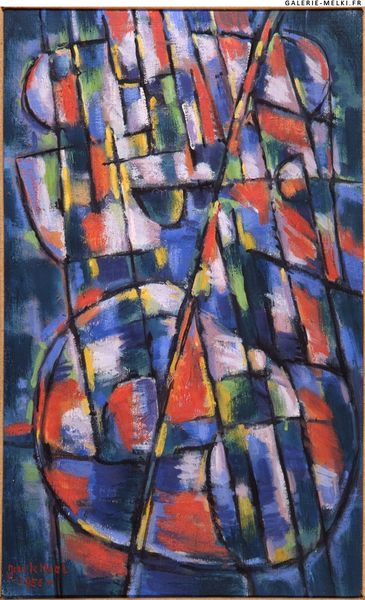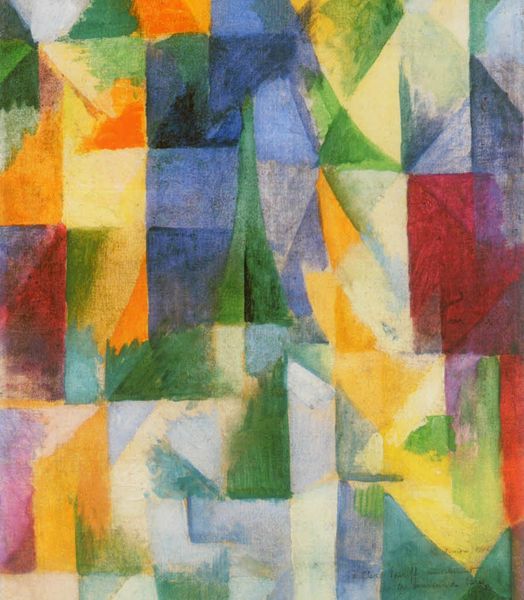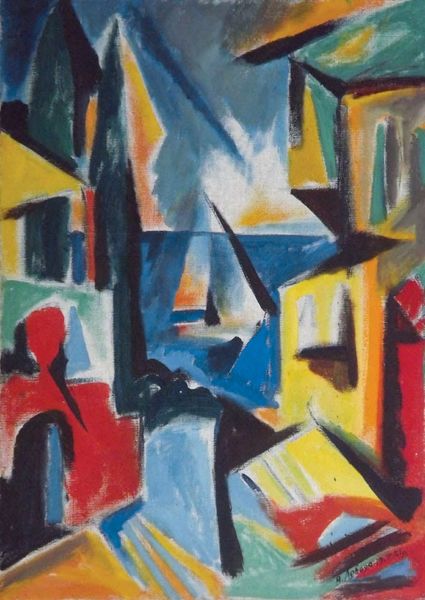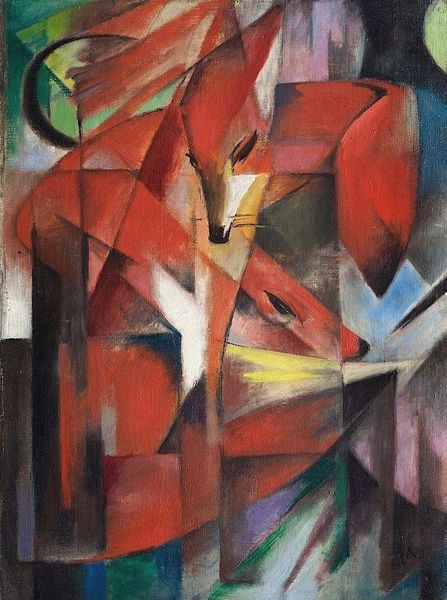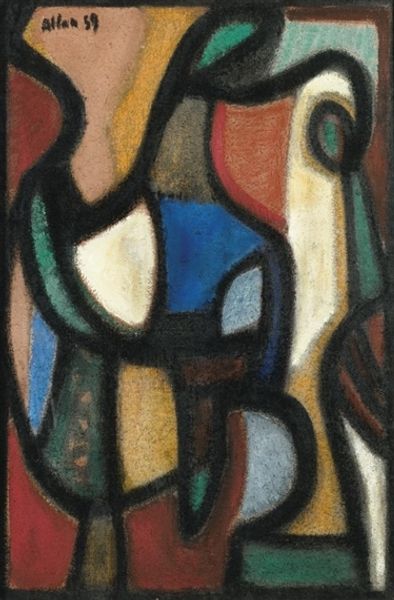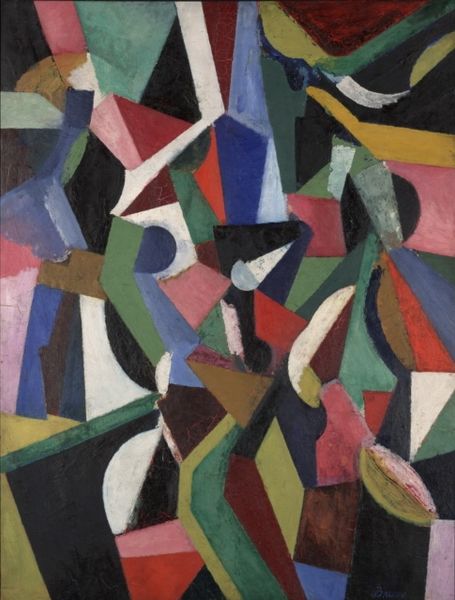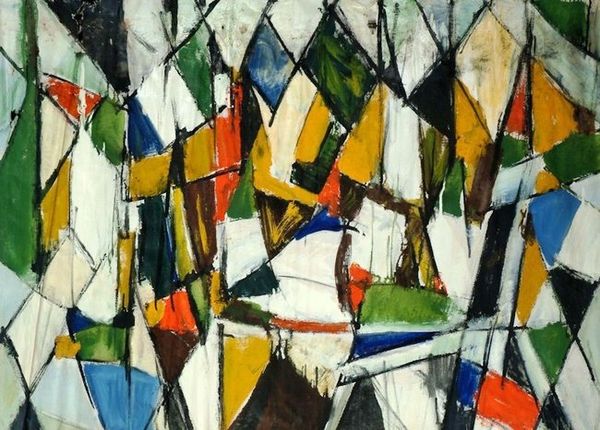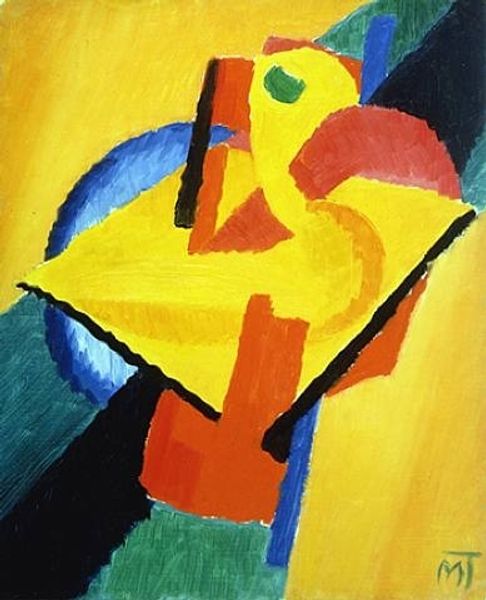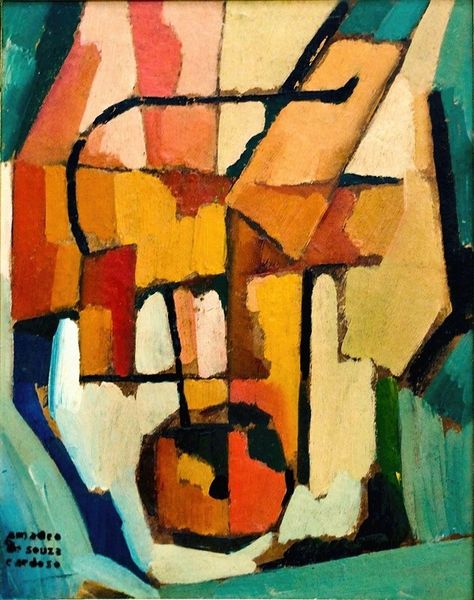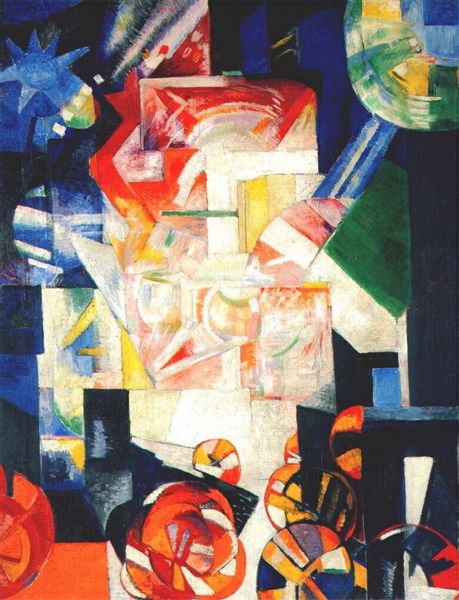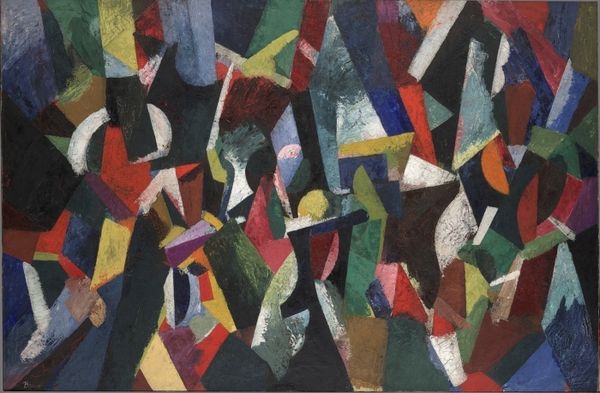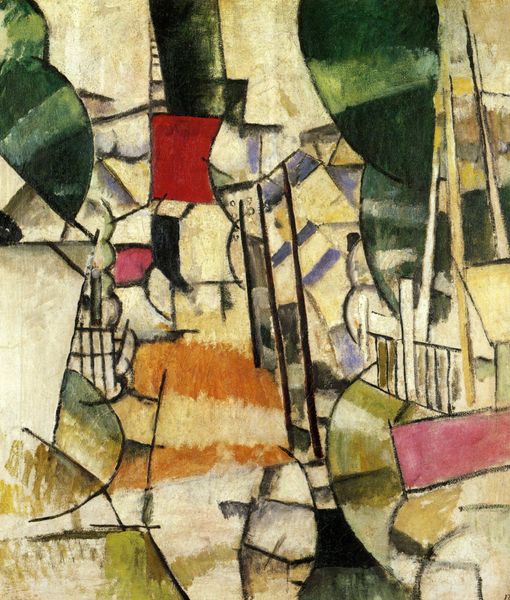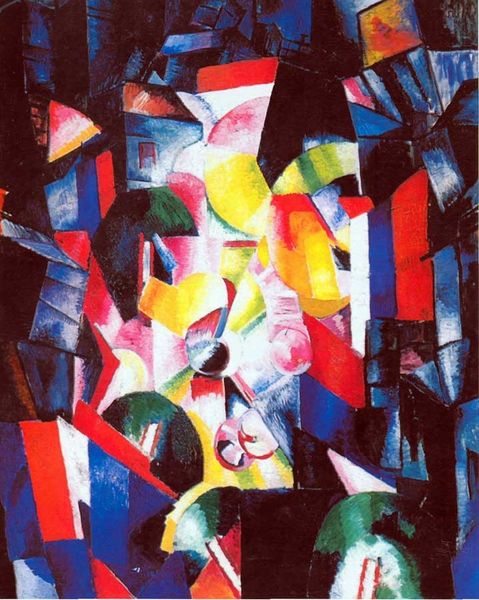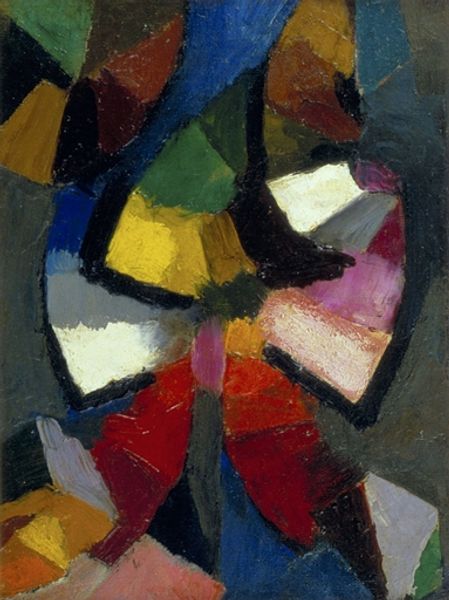
painting, oil-paint
#
cubism
#
painting
#
oil-paint
#
abstract
#
handmade artwork painting
#
oil painting
#
geometric
#
geometric-abstraction
#
abstraction
#
modernism
Copyright: Public Domain: Artvee
Curator: The texture really grabs me. You can almost feel the roughness of the brushstrokes. Editor: Agreed. What strikes me first about Marsden Hartley's "Abstraction, Blue, Yellow, and Green" from around 1913 is its almost unsettling vibrancy. A powerful, raw energy comes through in these fractured planes. Curator: That roughness suggests to me a deliberate focus on the act of painting itself. The visibility of the oil paint, its layering and blending, puts the materiality front and center. He's not trying to hide the labor, but instead is celebrating it. This pulls abstraction into the realm of the physical, challenging its often intellectual or spiritual interpretations. Editor: That's fascinating, given the period. How do you see the social context influencing Hartley's choices here? This was a time of rapid industrialization and shifting social structures. I think about the public exhibitions during that time and how these bold colours would have appeared on the walls in contrast with realism. Curator: I think the use of industrial pigments could definitely tie into this context, making art accessible by embracing techniques and cheaper materials. Look at how he builds form through color and texture instead of careful delineation. That almost seems defiant. Editor: Yes, a kind of artistic rebellion. Museums, critics and art markets played a large part in defining "art" so I think there’s a defiance. By intentionally leaving traces of its making—emphasizing brushstrokes, unblended colours—he disrupts expectations and perhaps prompts viewers to reconsider how the value and meaning are constructed. Hartley used these techniques in response to what could easily be a stifling social culture. Curator: And I see the repetition of shapes not just as a formal technique, but also a connection to repetitive industrial processes. Was he embracing or critiquing this? Editor: Perhaps both? There's tension, surely, in those conflicting ideas about labor. It encourages one to ponder those public discussions surrounding art in the early twentieth century. I also notice it looks almost like glasswork. Curator: Very much. So in essence, it's an exploration of materiality and labor disguised as, or perhaps enhanced by, abstraction? Editor: Precisely. This discussion highlights how art constantly converses with its context, reflecting social conditions through both its creation and public viewing.
Comments
No comments
Be the first to comment and join the conversation on the ultimate creative platform.
